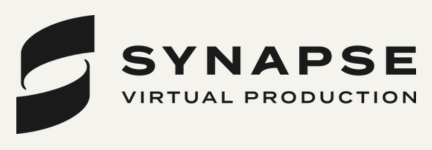
Kevin McHugh’s Secrets to a Successful Super Bowl Marketing Strategy

No matter where you are in the world, if you work in the advertising industry, you’re going to come across Super Bowl marketing in some capacity. It’s a time when everyone is talking about their favourite ads – or in more recent years, leading up to the game, favourite teasers – and all the attention is fixed on one big night, where, like the game itself, there will be winners, losers, and things to talk about for days to come. In short, as Kevin McHugh, chief strategy officer at Dentsu Creative Canada puts it, it’s "the pinnacle event for brands”.
But while year over year, various companies and businesses show a willingness to dump exorbitant amounts of money into buying airtime, there’s always a consistent hope for return on investment while doing so. There’s a deeply strategic side to the marketing approaches we see (other than just throwing money at celebrity appearances) which, every year, evolves to reflect the times. Whether it’s factors such as the rise of AR and AI encouraging brands and agencies to evolve their playbooks, the ever-growing need for authenticity within the work to spark a genuine audience connection, or even the emergence of new brand categories, no two Big Games are tackled the exact same way, providing an excellent opportunity for analysis.
So, to do just this, and break down some of the strategic trends and decisions we’ll be seeing within the ads on Super Bowl Sunday, both in Canada and the US, LBB’s Jordan Won Neufeldt sat down with Kevin for a chat.
LBB> Tell us about your relationship with the Super Bowl! How long have you been crafting advertising around the Big Game, and why is this annual highlight so important to you?
Kevin> The Super Bowl is the pinnacle event for brands – it’s a rare culmination of culture and interests that come together in a focused few hours of attention and fanfare. Whether people are tuning in for the sport, the entertainment, or just to participate in the water cooler talk the next day, there is no platform or event that draws such a broad, engaged audience. Last year, nearly half of Canada’s population tuned into the game. If there was a metaphorical field for advertising, the Super Bowl would undoubtedly offer the perfect conditions: brands are able to talk to a lot of people, who are in a good mood and paying attention.
As an advertiser, the Super Bowl is exciting because the size and profile of these kinds of campaigns can rally the entire organisation, giving everyone an opportunity to contribute. I’m fortunate to have been involved in many advertising campaigns promoted during the Super Bowl – my first one was for McDonald’s nearly 15 years ago! Dentsu Creative has been making Super Bowl ads for its clients for more than 20 years, and this year, we’re excited to say that several of our clients will have a presence on the big day.
LBB> As a strategist, what kind of trends do you expect to see in this year’s advertising? And what factors will be driving this?
Kevin> There’s a few that come to mind:
Celebrity
As in previous years, celebrities will play a big role in generating buzz and fame for brands. There’s a simple reason for this: celebrities are immediately recognisable and drive fame. Data from Ipsos suggests that celebrities drive stronger branded attention – in other words: people are more likely to pay attention to a spot with a celebrity in it. So, in a moment where brands are fiercely competing for our share of attention and memory, celebrities are believed to be an effective way to get noticed.
However, using celebrities can compete with the long-term memorability of a message. We’ve probably encountered this in our own lives – everyone remembers the commercial with a celebrity in it, but few remember what brand it was for, what product it was advertising, or why that brand, product or service is worth buying. So, there’s a balancing act marketers need to establish when using celebrities; they need to contribute to the overarching story, versus being the story themselves.
Brand Actions
With media now being so fragmented, the most successful brands break through with authentic actions and distinctive interactions. We’ve seen this come to life successfully in past years – last year, DoorDash proved how easy it is to get stuff delivered by giving viewers the chance to win every item advertised during the Super Bowl, delivered to their door. And in 2018, Tide notoriously hijacked ads and the broadcast itself, featuring Fox Sports presenter Terry Bradshaw with a stain on his shirt during the live broadcast of the game. At an event when every brand is trying to be the loudest, actions speak louder (and last longer) than words.
Going Beyond Super Bowl Sunday
Needless to say, Super Bowl Sunday is becoming an increasingly cluttered day for brands to have their moment (and stay in it). So, we’re seeing more brands branch out into times leading up to and after the game. Though Coors Light will have a strong presence on the big day, it’s already been using its voice in the time leading up to the game, aiming to own arguably the worst Monday of the year – the day after the Super Bowl.
LBB> And do you imagine these trends will vary between the Canadian and US markets?
Kevin> Unless Canadians are pirating the broadcast (no judgement!), it’s likely our nation will be watching or streaming a Canadian simulcast of the US feeds. This means the average viewer in Canada won’t be seeing all the US ads during the broadcast. As such, it’s an opportunity for Canadian marketers to have a greater voice – expect to see a combination of ‘made-for-the-big-game’ ads from Canadian companies, some US ads simulcast in Canada, and some Canadian ads you may have already seen before, now presented on a bigger stage.
LBB> Another point which has been discussed as of late is the influence of emerging technologies. How can we expect to see tools such as AR and AI in play with this year’s work?
Kevin> There are two important forces at play: more brands are attempting to expand their influence and command attention on Super Bowl Sunday outside of their commercial block, and more than half of Canadian viewers will be using their smartphones while watching TV.
This seamless movement between TVs, tablets, smartphones, smart devices, etc. presents all sorts of ways to enhance the experience through AI or AR. Expect to see both used as a way of drawing in more engagement, such as making predictions in game or synthesising things going on during the game. We also expect to see more advertisers using the Super Bowl as an opportunity to get fans excited about the future of AI, such as Meta’s AI-powered Ray-Ban smart glasses.
LBB> Do you believe this technological capability has improved the quality of the work?
Kevin> As with any tool, its potential value lies in the way it can be used. Consider the context of Super Bowl advertisements – brands want to be more responsive to what’s happening in the game, but live sports are inherently unpredictable. While we’re not yet at a place where AI or AR is replacing the human-crafted stories and campaigns we’re watching, we do expect that AI will be used to improve the responsiveness and dynamism of messages, effectively turning static ad slots into real-time responses or reactions to the game.
We also suspect that AI is doing a lot of work behind the scenes, though it may not always be explicitly mentioned in a commercial. In short, AI is being integrated into all aspects of a campaign, from strategy, to production, to media buying and reporting, and the Super Bowl will be no exception.
LBB> Equally important are the themes of authenticity and social responsibility, as well as capturing humour and memorable moments with Big Game advertising. In your opinion, why are these especially important this year?
Kevin> If the mid-2010s were all about brand purpose, we’re now in the era of brand action – the most memorable and engaging brands today are successful because of what they do, not what they say. While Canadians will pay a premium for brands they believe are authentic, the inverse is true too: more than two in three consumers claim they’d switch to a competitor if they felt a brand wasn’t being authentic. So, it’s important for brands to act in ways that demonstrate their authentic truths and advantages.
In our ‘Consumer Vision’ study, we found that 60% of Canadians say a significant share of their shopping decisions are influenced by the mood they’re in at the time. Moreover, studies have proven that 90% of consumers are more likely to recall a product or brand associated with a humorous treatment, and 72% would choose a brand that uses humour over its competition. It’s good for business to keep things light.
LBB> We’re also looking at the emergence of new brand categories – something that can attract more diverse audiences. What’s causing this, and what are the broader implications?
Kevin> Given the mass appeal of the Super Bowl and all its associated shows, the event appeals to a broad audience. As a result, we expect to see less advertising targeting specific audiences, niches, interests or groups, but rather, the inverse: more niche products and brands using Super Bowl Sunday as a way to reach more diverse audiences.
While we expect to see the usual big tech giants like Google and Meta have a presence, we also anticipate more niche products and services using the Super Bowl as their ‘big bet’, similar to what we’ve seen in the past with brands like Squarespace and GoDaddy. One notable entrant to this year’s festivities is Bosch, a German engineering and technology company that will be promoting its home appliances.
The major implication in this trend is that as niche brands extend themselves to a massively mainstream audience, there becomes a risk of irrelevance. New data from MarketCast suggests that Super Bowl ads are becoming less likeable over time, which is a signal that advertisers may not be understanding their audiences as well as they should be.
LBB> With all this in mind, strategically speaking, how has Super Bowl advertising evolved in Canada over the past decade? And do you think the trends of this year represent where the future of Big Game creative lies?
Kevin> Over the past decade, we’ve seen the cost of being in the Super Bowl go up, but the opportunities to participate right along with it. This year, premier spots during the Super Bowl sold for upwards of $10 million USD. Even for a smaller, Canada-only buy, the cost is both an opportunity, and a significant financial risk for Canadian advertisers, who are significantly more limited in what they can do with their budgets than US counterparts. So, while we’re not necessarily seeing a drop off of brands participating in and around the game, we are seeing brands be more strategic and efficient in how they take advantage of the opportunity, such as using their own communication channels to talk to people, or finding ways to participate in the game outside of traditional broadcast.
Advancements in technology will continue to push the envelope for what brands can do and how they can participate. Whether it comes through in the way a campaign is created, or how it’s placed, we expect brands to continue to have more of a voice in or around the game, finding innovative ways to show up authentically for Canadians.
LBB> Of course, this begs the question, how is Dentsu approaching this year’s event? Can you tell us about your work, and the factors guiding your strategic approach?
Kevin> Within the network, Dentsu Creative will have two campaigns running in the US for 7-Eleven and Totino’s. In Canada, some clients are using the opportunity to elevate promotions and campaigns already in-market, while others are taking a more grassroots approach to the big game, using their own social media channels and properties.
LBB> Looking outside of your agency, what are some of the best examples of strong Super Bowl advertising over the years? What made them stand out?
Kevin> I’m dating myself – and I was just a kid at the time – but many of the Budweiser ads of the mid to late ‘90s are icons, not just for the spots themselves, but for the cultural impact they made. If we’re still saying (25 years later!) that the strongest advertisements extend beyond their advertising slots, Budweiser was already doing this with its three frogs in 1995, the ‘Bud Ice Penguin’ in 1996, and of course, the iconic ‘Wassup’ of 2000.
Though I feel we as an industry should be looking ahead towards what’s possible, I do feel there are lessons we’re still applying today from that era of ads.
LBB> Finally, is there anything you’re particularly excited to see on Super Bowl Sunday?
Kevin> The best part of the Super Bowl is that it’s yet another excuse to hang out with friends. What I’m looking forward to seeing most (besides an obnoxious plate of nachos in front of me) are the ways people outside of advertising react to the kind of things we make. If the Super Bowl is our industry’s greatest day of accomplishment, it’s also our greatest day of judgement, and it’s always healthy to understand what people outside our industry think about the work.















